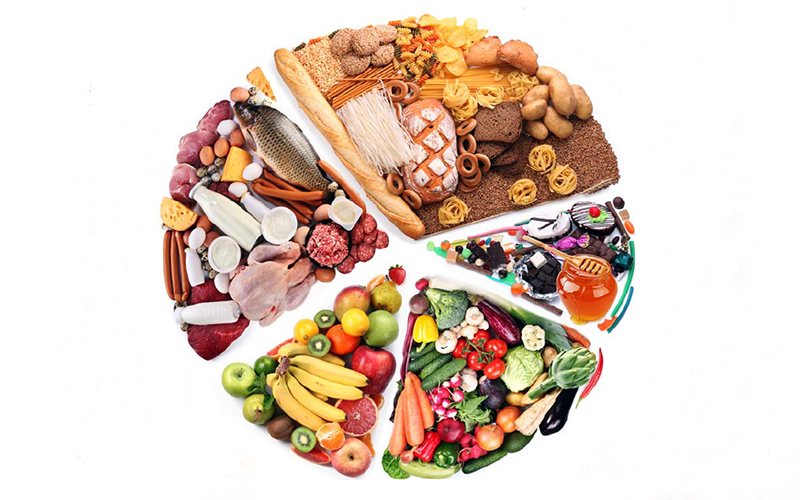
The body needs iron for growth, development, cellular functioning and to make certain hormones and connective tissue. Iron is also an essential component of hemoglobin—the part of red blood cells that carry oxygen from your lungs to your muscles, and myoglobin, which helps muscles use oxygen and produce energy. Making sure your diet includes iron-rich foods is particularly important for athletes.
| Age | Males | Females |
|---|---|---|
| 4-8 Years Old | 10 mg | 10 mg |
| 9-13 Years Old | 8 mg | 8 mg |
| 14-18 Years Old | 11 mg | 15 mg |
| 18-50 Years Old | 8 mg | 18 mg |
Did You Know?
Requirements for vegetarians, plant-based and anemic athletes are often higher. Please check with a licensed medical professional and do not take iron supplements unless recommended by your physician.
Individuals with low iron stores or low blood levels, also known as anemia, may feel tired and fatigue easily during exercise, have decreased motivation to train, or feel like practice and games are harder than usual.
Iron is found naturally in a variety of foods including:
- Red Meat
- Seafood
- Poultry
- Eggs
- White Beans
- Lentils
- Dark Leafy Greens
- Peas + Chickpeas
- Kidney Beans
- Tofu
- Nuts
- Dried Fruit
Iron is also added to some grains, like pasta, bread and cereals. Look for the words “fortified” or “enriched,” and check the nutrition labels.
The two types of iron
Iron in food comes in two different forms: heme and non-heme. Meat, seafood and poultry have both nonheme and heme iron.
Heme iron is better absored by the body than non-heme iron, and it’s found in animal proteins. Food sources of heme iron include:
- Oysters – 3 oz.: 7.80 mg
- Lean beef steak – 3.5 oz.: 3.80 mg
- Egg, whole: 1.70 mg
- Lean pork/ham – 3.5 oz.: 1.50 mg
- Tuna, cooked – 3.5 oz.: 1.10 mg
- Salmon or chicken breast – 3.5 oz.: 0.80 – 0.90 mg
- White fish – 3.5 oz.: 0.40 mg
Non-heme iron is found in plant foods and iron-fortified food products. Food sources of non-heme iron include:
- Fortified cereal – 1 cup: 4.50 – 18 mg
- Tofu, raw – 1/2 cup: 6.65 mg
- Lentils – 1 cup: 6.59 mg
- Oatmeal, instant (1 pkg) or Sport bar (1): 6.30 mg
- Kidney or garbanzo beans – 1 cup: 4.75 – 5.20 mg
- Black beans – 1 cup: 3.61 mg
- Spinach, cooked – 1/2 cup: 3.21 mg
- White pasta or rice, cooked – 1 cup: 1.90 mg
- Dried figs (4) or dried apricots (10 halves): 1.67 mg
- Raisins – 1/3 cup: 1.04 mg
Pro Tip: To increase nonheme iron absorption, pair with vitamin C-rich foods:
- Glass of orange juice with iron-fortified cereal and milk
- Peanut butter and fresh strawberry sandwich on whole wheat bread
- Marinara sauce with lean ground beef or turkey over iron enriched wheat pasta
- Tofu scramble with tomatoes and mushrooms
- Broccoli beef stir-fry
- Strawberry spinach salad with grilled chicken breast
- Chili with lean ground beef
- Turkey sausage in lentil soup
- Eggs and oatmeal topped with raisins
Coffee and caffeinated products can inhibit absorption of nonheme iron. Anemic athletes should only drink caffeinated beverages between meals and should wait at least an hour after eating to drink coffee or tea.
How to get enough iron
So, how can you make sure you’re getting enough iron? Just follow these simple steps.
- Consume iron-rich foods like meat, fish, poultry and tofu in two meals per day.
- Eat lean cuts of beef, pork and dark meat from skinless turkey or chicken 3-4 times per week.
- Use cast iron cookware if available.
- Snack on dried fruit like apricots and figs.
- Choose iron-enriched or iron-fortified grains and cereals.
- Hint: If your favorite cereal isn’t fortified, mix it with another cereal that is!
